Are you unhappy with the appearance of your nose? Do you struggle with breathing difficulties such as an obstructed airway, which can lead to complications and affect your daily life? Are you experiencing symptoms of obstructive sleep apnea? If so, there are solutions available for patients like you. Nasal surgery, also known as rhinoplasty or a “nose job,” is a popular plastic surgery procedure that addresses both aesthetic and functional concerns related to the nasal septum. Nasal reconstruction is performed to improve the appearance and function of the nose.
Rhinoplasty, also known as nasal reconstruction or plastic surgery, is a surgical procedure that aims to enhance the appearance and improve the function of your nose, including nasal correction and addressing issues with the nasal septum. Whether you wish to achieve facial harmony, correct breathing issues, or boost your self-confidence, nose surgery (rhinoplasty) can be the solution you’ve been searching for. Rhinoplasty is a procedure that involves nasal reconstruction and correction, addressing issues such as the nasal septum.
During a rhinoplasty surgery, a qualified plastic surgeon will reshape the nose of a rhinoplasty patient by modifying bone, cartilage, or tissue. This procedure is commonly performed as a primary rhinoplasty or for nasal reconstruction. The surgery can be performed using either an open or closed technique depending on your specific needs. Additionally, it may involve the use of bilobed flaps, skin grafts, and sutures. It’s important to consult with an experienced plastic surgeon who specializes in facial plastic surgery, including open rhinoplasty approach, closed rhinoplasty, and nasal reconstruction, to discuss your goals and expectations.
We’ll explore how rhinoplasty surgery, specifically the open rhinoplasty approach, can transform not only the appearance but also the function of your nose through nasal reconstruction. This procedure involves reshaping the nasal septum to improve both the aesthetic and functional aspects of your nose. So let’s get started on this journey towards achieving a new nose through nasal reconstruction and rhinoplasty surgery! We will explore the open rhinoplasty approach, which allows for precise reshaping of the nasal skin.
Rhinoplasty, also known as a “nose job,” is a surgical procedure that aims to enhance the aesthetics of the nose or improve its function. Whether you’re looking to achieve a more symmetrical appearance or address breathing difficulties, nose surgery or rhinoplasty can help you achieve your desired outcome. Whether it’s for nasal reconstruction or to correct a nasal defect, rhinoplasty is an effective procedure for enhancing the human nose.
The primary purpose of nose surgery, also known as rhinoplasty, is to enhance the aesthetics of the face through the reconstruction technique. Many individuals seek rhinoplasty surgery to address cosmetic concerns such as a crooked nose, a prominent hump on the bridge, or an asymmetrical shape. Rhinoplasty surgery can be performed using either the open rhinoplasty or closed rhinoplasty technique, depending on the specific needs of the patient. This procedure is also commonly used for nasal reconstruction. By undergoing rhinoplasty surgery, also known as open rhinoplasty, surgeons can reshape the nose to create a more balanced and harmonious facial profile. This procedure boosts self-confidence and improves overall facial symmetry.
In addition to enhancing aesthetics, rhinoplasty can also improve nasal function for reconstruction patients by using tissue grafts. Some patients may experience breathing difficulties due to structural abnormalities in their nasal passages, which can be addressed through rhinoplasty surgery. Open rhinoplasty is a common procedure that involves reshaping the cartilages to improve airflow. These issues can be caused by factors such as a deviated septum (the cartilage dividing the nostrils) or narrow airways. Rhinoplasty surgery, specifically open rhinoplasty, can help patients with these issues by addressing the cartilages. With rhinoplasty, patients can have their cartilages reconstructed, allowing for better airflow and alleviating breathing issues. This procedure can correct functional problems.
There are two main techniques: open and closed. The choice between open rhinoplasty surgery and other approaches depends on various factors such as the specific needs of patients and the expertise of the surgeon in working with tissue.
In open rhinoplasty, the surgeon makes an incision on the columella—the strip of skin between the nostrils—to improve visibility during surgery. This technique is commonly used to perform flaps and grafts on patients with wounds. This open rhinoplasty technique provides direct access to the underlying tissue structures of the nose, enabling precise adjustments and modifications to the tip during reconstruction.
By performing an open rhinoplasty, surgeons can have a clear view of the nasal framework and meticulously reshape bone and cartilage using grafts and tissue, providing greater control for patients. This open rhinoplasty technique is particularly useful for patients with complex cases or when significant changes to the nasal structure, including the tip and surrounding tissue, are required.
Closed rhinoplasty, on the other hand, involves making incisions inside the nostrils to treat wounds and create flaps for patients. The incisions are made inside the nostrils, allowing the surgeon to access the tip of the nose and make necessary adjustments. This open rhinoplasty technique eliminates visible external scars for patients, as all the surgical work is performed internally. It has been studied and documented on PubMed. The surgeon accesses and modifies the nasal structures through these hidden incisions during an open rhinoplasty procedure, which helps minimize the risk of wound complications for patients.
Although closed rhinoplasty may limit visibility for patients compared to open rhinoplasty, it offers certain advantages. According to a study published on PubMed, this technique is effective in minimizing the risk of flap complications and wound healing issues. The absence of external scarring means a quicker recovery time and reduced risk of complications associated with patient’s healing flap. This less invasive approach may be suitable for patients who require minor adjustments or those who prefer a technique that involves a flap. It is especially beneficial for patients with a wound.
During a rhinoplasty procedure, the surgeon skillfully removes or reshapes bone, cartilage, and soft tissue to achieve the desired outcome for the patient’s wound and flap. Let’s take a closer look at some of the steps involved in this surgical process for a patient with a wound that requires a flap.
The nose is an incredible structure, composed of various elements that work together to provide both form and function. One of these elements is the nasal flap. To truly appreciate the complexity of rhinoplasty, it’s essential to understand the intricate details of nasal anatomy, including the flap.
The human nose comprises several key components: bone, cartilage, skin, mucous membranes, and the flap. Each flap plays a vital role in shaping and supporting the nose.
Cartilage is one of the primary building blocks that give shape and support to our noses. It acts as a flap, providing structure and stability. It acts as a scaffold upon which other structures, including the flap, are built. Without cartilage, our noses would lack definition and strength.
This flexible yet sturdy material allows for movement while ensuring structural integrity. The flap on the material provides the necessary flexibility and durability. It serves as a foundation for shaping both internal and external aspects of nasal reconstruction procedures, including the use of a flap.
The nasal septum is a crucial component within nasal anatomy. The nasal cavity is divided into two separate passages, known as the left and right nostrils, by a flap. This flap plays a significant role in breathing function.
A deviated or damaged septum can cause breathing difficulties or even obstructive sleep apnea, as it can lead to a flap that obstructs the airway. Rhinoplasty often involves correcting any issues with the nasal flap partition to enhance airflow through both nostrils.
While rhinoplasty is often associated with cosmetic improvements, it’s important to recognize that the external appearance of the nose is a direct result of its underlying structures, including the nasal flap. Altering these structures, such as a flap, can lead to both functional and aesthetic enhancements.
The nasal tip, for instance, is shaped by the underlying cartilage, skin, and flap. By modifying the nasal tip flap during rhinoplasty, surgeons can refine the shape and projection of the nasal tip flap, achieving desired results.
Rhinoplasty procedures have come a long way in recent years, offering individuals the opportunity to enhance their nasal appearance and improve self-confidence. With various surgical techniques available, plastic surgeons can tailor the procedure to meet each patient’s unique needs, including the use of a flap. Let’s explore some of the most common techniques used in rhinoplasty, including the use of a flap.
One popular technique is augmentation rhinoplasty, which involves adding volume to specific areas of the nose using implants or grafts. This approach is often chosen by individuals seeking to enhance the overall shape and size of their nose. Cartilage grafts are commonly used in this procedure, as they provide a natural-looking result while maintaining structural integrity.
During an augmentation rhinoplasty, a skilled surgeon strategically places cartilage grafts in areas that require additional volume. These grafts can be harvested from various sources, such as the patient’s own septum or ear cartilage. By carefully sculpting and positioning these grafts, surgeons can achieve harmonious facial proportions and create a more balanced profile.
On the other hand, reduction rhinoplasty focuses on removing excess bone or cartilage from the nose to achieve desired proportions. This technique is commonly employed when patients wish to address issues such as a prominent hump on the bridge of their nose or an overly wide nasal structure.
To perform reduction rhinoplasty, plastic surgeons employ either an open or closed approach. In an open rhinoplasty approach, a small incision is made along the columella (the strip of tissue between the nostrils), allowing for better visibility and access during surgery. Conversely, closed rhinoplasty involves incisions made inside the nostrils, resulting in no visible external scarring.
Once access is gained through either approach, the surgeon meticulously removes excess bone and cartilage, sculpting the nose to achieve the desired shape and size. By carefully considering facial proportions and individual features, plastic surgeons can create a natural-looking result that enhances the patient’s overall appearance.
For individuals seeking to improve the appearance of their nasal tip, tip rhinoplasty offers an effective solution. This technique targets reshaping the nasal tip to enhance definition and symmetry. Many patients choose this procedure to address concerns such as a bulbous or drooping tip, asymmetry, or lack of projection.
During a tip rhinoplasty, plastic surgeons employ various techniques depending on the patient’s specific needs. These may include cartilage grafts or sutures to reshape and refine the nasal tip. By precisely manipulating these structures, surgeons can create a more refined and aesthetically pleasing nasal tip that complements other facial features.
In some cases, individuals may require revision rhinoplasty to correct complications or unsatisfactory results from a previous surgery. Revision rhinoplasty requires exceptional skill and expertise due to altered anatomical structures resulting from prior procedures.
During revision rhinoplasty, plastic surgeons carefully assess the patient’s unique situation and develop a tailored surgical plan. The procedure may involve addressing issues such as asymmetry, breathing difficulties, scarring, or poor aesthetic outcomes from previous surgeries.
To ensure successful outcomes in revision cases, plastic surgeons often utilize advanced techniques such as cartilage grafts from alternative sources or paramedian forehead flaps for complex reconstructions. Skin grafts may also be employed when necessary to restore proper contouring and symmetry.
The recovery process after rhinoplasty is a crucial phase that requires patience and proper care. It typically lasts around 1 to 2 weeks, but the exact duration may vary depending on individual healing abilities. During this time, it’s important to follow post-operative instructions provided by your surgeon for optimal healing.
In the initial days following rhinoplasty, it is common to experience swelling and bruising around the nose and eyes. This is a natural response of the body to surgery and should subside gradually over time. Applying cold compresses as recommended by your surgeon can help reduce swelling and alleviate discomfort.
In some cases, nasal packing may be used temporarily to support the nasal structures during healing. This involves placing gauze or soft silicone splints inside the nose to maintain shape and stability. While it may feel uncomfortable, it plays a vital role in ensuring proper healing and preventing any complications. Your surgeon will guide you on how long the packing needs to stay in place before removal.
It’s important to note that during the recovery process, asymmetrical healing is not uncommon. The nose may appear slightly different from one side to another or compared to your expectations. This occurs due to various factors such as tissue swelling, individual healing responses, and underlying structural changes made during surgery.
While it can be concerning initially, asymmetry often resolves itself as swelling subsides and tissues settle into their new position. It’s crucial not to jump into conclusions too soon after surgery but rather give your body enough time for complete healing.
To ensure a smooth recovery process, following your surgeon’s post-operative instructions meticulously is essential. These instructions may include:
By adhering to these instructions, you give your body the best chance to heal properly and achieve optimal results.
Recovery after rhinoplasty requires patience. It’s important to remember that everyone heals at their own pace, and visible improvements will occur gradually over time. While initial swelling and bruising may subside within a few weeks, it can take several months for the final results of your rhinoplasty to fully manifest.
During this period, attending follow-up appointments with your surgeon is crucial. These appointments allow them to assess your progress, address any concerns you may have, and make necessary adjustments if required. Your surgeon is there to guide you through the recovery process and ensure that you achieve the desired outcome from your rhinoplasty procedure.
After undergoing rhinoplasty, it is common to experience some pain and discomfort during the healing process. However, there are several strategies and techniques that can help manage these symptoms effectively.
To ensure your comfort after rhinoplasty, your surgeon will prescribe pain medication. These medications are specifically chosen to alleviate any post-operative discomfort you may experience. It is essential to follow your surgeon’s instructions carefully regarding dosage and frequency of taking the prescribed medication.
Applying cold compresses to the surgical area can significantly help in reducing swelling and alleviating pain. The cold temperature helps constrict blood vessels, which reduces inflammation and provides a soothing relief sensation. Gently place a cold compress or ice pack on the nose for short intervals at regular intervals throughout the day.
Elevating your head while sleeping is an effective way to minimize swelling further. By using an extra pillow or propping up your head with cushions, you allow gravity to assist in draining excess fluid from the surgical site. This simple maneuver helps reduce swelling, making you more comfortable during the recovery phase.
Following proper post-operative care instructions provided by your surgeon plays a vital role in ensuring a more comfortable recovery process. Avoid strenuous activities that could put unnecessary strain on your healing nose. Engaging in such activities too soon after surgery can lead to complications or injury.
It is crucial to communicate openly with your surgeon throughout the recovery period. If you experience excessive pain or unexpected symptoms, reaching out to them promptly allows them to assess any potential issues and provide appropriate support and guidance.
During rhinoplasty procedures, patients have two anesthesia options: local anesthesia or general anesthesia. Local anesthesia numbs the surgical area, allowing you to remain awake while your surgeon performs the procedure. On the other hand, general anesthesia ensures complete unconsciousness during surgery.
Your health care provider will discuss these options with you during your consultation. They will consider factors such as your medical history, preferences, and any contraindications to determine which anesthesia option is best for you.
After rhinoplasty, it is common for patients to experience swelling in and around the nose. This swelling can temporarily affect breathing through the nasal passages. To manage this discomfort, your surgeon may recommend using saline nasal sprays or performing gentle nasal rinses with a neti pot to keep the nasal passages moisturized and clear.
It is important to remember that each individual’s healing process varies. While some discomfort is expected after rhinoplasty, excessive pain or unexpected symptoms should be promptly communicated to your surgeon. They are there to provide guidance, support, and ensure your recovery remains on track.
By following post-operative instructions diligently and maintaining open communication with your surgeon throughout the recovery process, you can help manage pain and discomfort effectively after rhinoplasty. Remember that proper care and patience are essential elements of a smooth healing journey toward achieving your desired results.
Having realistic expectations is crucial when considering rhinoplasty as a cosmetic procedure. While it can be tempting to envision a perfect nose, it’s important to understand that the results of rhinoplasty may vary depending on several individual factors. These factors include nasal structure, skin type, and healing ability.
During your consultation with a qualified surgeon, it is essential to discuss your goals openly and honestly. This will help ensure that you have a clear understanding of what can be achieved through rhinoplasty. Your surgeon will evaluate your nasal anatomy and provide professional guidance on what is realistically attainable.
It’s important to note that even with the most skilled surgeon and advanced techniques, minor imperfections may still exist after surgery. Perfection cannot always be guaranteed or achieved. However, this should not discourage you from pursuing rhinoplasty if it aligns with your aesthetic goals.
Patient satisfaction with the results of rhinoplasty is generally high when expectations are realistic. Understanding that small changes can make a significant difference in overall appearance is key. The goal of rhinoplasty is often to enhance facial harmony by improving the balance between different facial features.
One aspect that affects the outcome of rhinoplasty is tip projection. Depending on your desired result and existing nasal structure, your surgeon may adjust the projection of your nasal tip during the procedure. This can greatly impact the final appearance of your nose.
Another factor to consider is skin texture. The thickness and quality of your skin play a role in how well certain changes will show after surgery. Thicker skin tends to conceal more subtle alterations compared to thinner skin types.
When discussing potential outcomes with your surgeon, they may refer to different aesthetic subunits of the nose. These subunits refer to specific areas such as the dorsum (bridge), tip, nostrils, and columella (the strip between nostrils). Understanding these terms can help you communicate your desired changes more effectively.
Ultimately, realistic expectations for rhinoplasty results involve understanding the limitations of the procedure and how it can improve your facial harmony. While perfection may not be attainable, a skilled surgeon can work with you to achieve a nose that enhances your overall appearance and boosts your confidence.
Before undergoing a rhinoplasty procedure, there are several important steps and considerations to keep in mind. This section will guide you through what you can expect before the surgery takes place.
One of the first things that will happen prior to your rhinoplasty procedure is a consultation with your plastic surgeon. During this appointment, you will have the opportunity to discuss your goals, concerns, medical history, and expectations. It’s crucial to be open and honest during this conversation so that your surgeon can fully understand your desired outcome.
In addition to discussing your goals, your surgeon may also perform a physical examination of your nose. They will assess factors such as its shape, size, blood supply, skin color, and the tip area. This examination helps them determine the most appropriate approach for your rhinoplasty procedure.
Depending on your individual case and medical history, pre-operative tests may be required for assessment purposes. These tests can include blood work or imaging studies like X-rays or CT scans. These diagnostic tools allow your surgeon to gain a deeper understanding of the internal structure of your nose and identify any potential issues that need to be addressed during the procedure.
Your plastic surgeon will provide you with specific pre-operative instructions that you must follow closely in preparation for the rhinoplasty procedure. These instructions may include guidelines regarding medications, smoking cessation, fasting requirements, and other essential details.
For example, you may need to avoid certain medications and supplements leading up to the surgery as they can increase bleeding risks or interfere with anesthesia. It’s crucial to disclose all medications you are currently taking or have recently taken during this consultation so that your surgeon can provide accurate guidance.
On the day of the rhinoplasty procedure itself, it’s important to arrange for someone to drive you home afterward. This is because you will be under the effects of anesthesia, which can impair your ability to drive safely. Having a trusted friend or family member available to take you home ensures your safety and allows you to focus on recovering from the surgery.
After undergoing rhinoplasty, it is important to be prepared for some common side effects that may occur during the recovery process. One of the most noticeable effects is swelling, which can cause your nose to appear larger than anticipated. This swelling is a natural response to the surgery and typically subsides over time. Similarly, bruising around the nose and eyes is also common and should fade gradually.
In addition to swelling and bruising, you may experience nasal congestion following rhinoplasty. This occurs due to internal swelling within the nasal passages, making it feel stuffy or blocked. It’s essential not to be alarmed by this temporary discomfort as it will improve as your nose heals.
To ensure proper healing and support for your newly shaped nose, your surgeon may place a splint or cast on it temporarily. This splint helps maintain the desired form while protecting the delicate tissues during the initial stages of recovery. While wearing this external support may feel slightly uncomfortable at first, it plays a crucial role in achieving optimal results.
The splint or cast acts as a shield against accidental bumps or movements that could potentially disrupt the healing process or affect the final outcome of your rhinoplasty procedure. Your surgeon will provide instructions on how long you need to wear it and when it can be safely removed.
Following rhinoplasty surgery, regular follow-up appointments will be scheduled with your surgeon. These appointments are essential for monitoring your progress throughout the healing journey. During these visits, your surgeon will assess how well you are recovering and address any concerns you might have.
If sutures were used during your procedure or packing was placed inside your nose to control bleeding after surgery, these follow-up appointments provide an opportunity for their removal if necessary. Your surgeon will evaluate the healing process and determine when it is appropriate to remove any sutures or packing.
It’s important to remember that rhinoplasty is a complex surgical procedure, and the final results may take time to fully manifest. While you may notice improvements in the appearance of your nose relatively soon after surgery, it can take several months for the swelling to completely subside and for your nose to settle into its permanent shape.
During this healing period, it’s crucial to be patient and allow your body ample time to recover. It is normal for minor asymmetries or irregularities to be present during the initial stages of healing. These imperfections usually resolve as the tissues continue to heal and adjust.
Many people wonder about the long-term outlook and results. Well, let me tell you, my friend, that the long-term results of this procedure are generally permanent. Yes, you heard it right! Once you go through rhinoplasty and give your nose some tender loving care during the healing process, those changes are here to stay.
Now, don’t be surprised if you notice subtle changes in your nose’s appearance as time goes by. You see, the nose is a complex structure that continues to heal and evolve even after the initial recovery period. It’s like a work of art that matures over time. So, embrace these subtle transformations as part of your journey towards a more beautiful and harmonious facial feature.
But hey, I want you to have realistic expectations throughout this process. Communication is key! Make sure to openly discuss any concerns or desired adjustments with your surgeon. They’re there to guide you and ensure you’re happy with the final outcome. Remember, they’ve got years of experience under their belt and know how to make magic happen!
To maintain optimal long-term results from your rhinoplasty adventure, following proper post-operative care instructions is crucial. Your surgeon will provide detailed guidelines tailored specifically for you. These instructions may include things like avoiding strenuous activities for a certain period or taking special precautions while sleeping.
Now let’s talk about outcomes because that’s what we’re all here for! Successful rhinoplasty can bring about incredible outcomes such as improved facial harmony, boosted self-confidence (hello mirror selfies!), and enhanced breathing function. Imagine waking up every morning feeling like a superstar with a perfectly balanced face and an effortlessly clear nasal passage – it’s truly life-changing!
When evaluating the cost of rhinoplasty against its benefits, it’s important to consider both short-term expenses and long-term gains. Sure, the initial investment might seem significant, but when you think about the years of enjoyment and improved quality of life that come with it, the value becomes crystal clear. It’s like investing in your happiness and well-being.
Now, let’s take a trip down memory lane and explore the history of rhinoplasty. Did you know that this procedure dates back thousands of years? Ancient civilizations like the Egyptians and Indians were pioneers in nasal reconstruction techniques. Thankfully, we’ve come a long way since then, with modern advancements allowing for more precise results and shorter recovery times.
Time is on your side. The healing process takes time, my friend! You’ll notice gradual improvements as each week passes by. Patience is key during this journey. Rome wasn’t built in a day, and neither will your dream nose be – but trust me when I say it’s worth the wait!
Sometimes during rhinoplasty, specific segments of the nose may require attention due to defects or structural issues. One such area is called the middle vault. This region between the upper and lower parts of your nose plays an essential role in maintaining proper shape and function. Surgeons carefully evaluate this segment during surgery to ensure everything is just right.
A deviated septum can be a real pain in the nose. Literally. Not only does it affect the way your nose looks, but it can also cause breathing difficulties and other annoying symptoms. Fortunately, rhinoplasty is here to save the day! This surgical procedure can not only address aesthetic concerns but also correct a deviated septum, improving both form and function.
When we talk about a deviated septum, we’re referring to a condition where the nasal septum, which is the wall that separates your nostrils, is crooked or off-center. This misalignment can occur due to various reasons such as injury or natural growth patterns. Regardless of its cause, a deviated septum can lead to all sorts of problems like congestion, snoring, and difficulty breathing through the nose.
During rhinoplasty, skilled surgeons have the power to straighten that wonky septum and give you some much-needed relief. The procedure typically involves making incisions inside the nose to access the cartilage and bone responsible for causing the deviation. These skilled hands then work their magic by removing any excess cartilage or bone obstructing proper airflow.
One technique commonly used for correcting a deviated septum is called septoplasty. This procedure focuses solely on fixing functional issues with minimal changes made to the external appearance of your nose. It may involve reshaping or repositioning the septal cartilage or even creating what’s known as a “septal mucosal flap” to help straighten things out.
Imagine having an internal construction crew working diligently within your nasal passages—removing obstacles and restoring order so you can breathe freely again! By addressing these structural abnormalities through surgical correction, rhinoplasty offers more than just cosmetic enhancements; it provides tangible relief from nasal congestion and associated symptoms.
Combining functional correction with aesthetic improvements is one of the many advantages of rhinoplasty. While your surgeon is busy fixing that deviated septum, they can also address any other nasal deformities or defects you may have. It’s like getting a two-for-one deal! Whether it’s a bump on the bridge of your nose or uneven nostrils, these additional corrections can be made simultaneously, ensuring you leave the operating room with a nose that not only works better but looks better too.
So, if you’ve been struggling to breathe through your nose and suspect a deviated septum may be to blame, don’t fret! Rhinoplasty offers a solution that goes beyond mere aesthetic changes. With its ability to correct functional issues like a deviated septum while enhancing the overall appearance of your nose, this surgical procedure can truly transform both form and function.
Congratulations! You’ve made it through all the sections leading up to this point. Now that you have a solid understanding of rhinoplasty, it’s time to focus on achieving your desired results. Remember, everyone’s nose is unique, and what may work for one person may not work for another. That’s why it’s crucial to communicate openly with your surgeon about your expectations and goals.
To ensure the best outcome, follow their advice closely and maintain realistic expectations throughout the process. Rhinoplasty can enhance your facial harmony and boost your confidence, but it’s important to understand that perfection is not always attainable. Trust in the expertise of your surgeon, take care of yourself during recovery, and be patient as you wait for the final results to emerge.
Yes, rhinoplasty can correct structural issues that contribute to breathing difficulties. If you’re experiencing trouble breathing due to a deviated septum or other nasal abnormalities, rhinoplasty can address these concerns along with improving the aesthetic appearance of your nose.
The recovery period after rhinoplasty varies from person to person but generally takes around 1-2 weeks for initial healing. However, full recovery may take several months as swelling gradually subsides and the nose settles into its final shape.
In most cases, any incisions made during rhinoplasty are well-hidden inside the nostrils or along natural creases of the nose. This means that scarring is usually minimal and not easily noticeable.
You should avoid strenuous activities for at least a few weeks following surgery to allow proper healing. Your surgeon will provide specific guidelines based on your individual case, but generally speaking, you can expect to gradually resume your normal activities within a month or so.
The results of rhinoplasty are long-lasting, but it’s important to remember that your nose will continue to change naturally over time due to aging. However, the improvements made during surgery will generally remain intact, providing you with lasting satisfaction.
Having a big, long, or prominent nose is a challenging problem not just for you, but also for many people of different age groups. Yet, as you’re going to see next, the solution is so simple! Let’s introduce you to rhinoplasty!
Rhinoplasty, also called nose job or nose reshaping, is a surgical procedure that reshapes the nose by altering the bone and cartilage. This alone can enhance facial harmony and put an end to the struggle of many people who have big noses.
In 2019, over 157,000 women and over 50,000 men underwent rhinoplasty in the United States. This makes rhinoplasty the most common cosmetic surgery for males. Nevertheless, rhinoplasty divides into different types, including nose reduction and nose augmentation. Depending on your needs, your surgeon will pick the type that fits your needs perfectly.
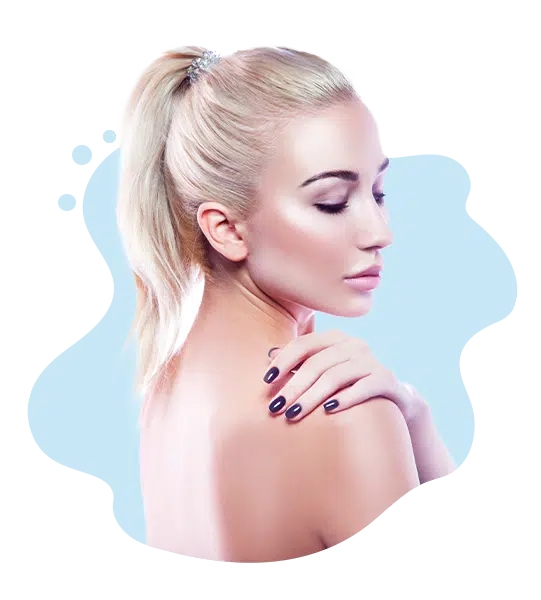
Rhinoplasty (nose job) doesn’t only have benefits for your appearance, but also for your overall health and well-being. In short, you will get the following benefits if you choose this surgery:
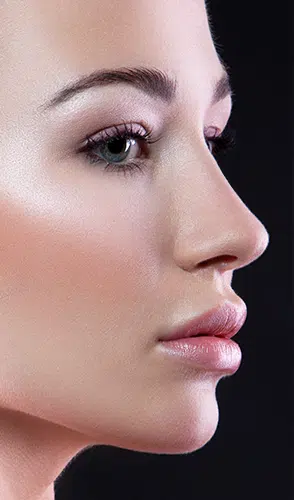
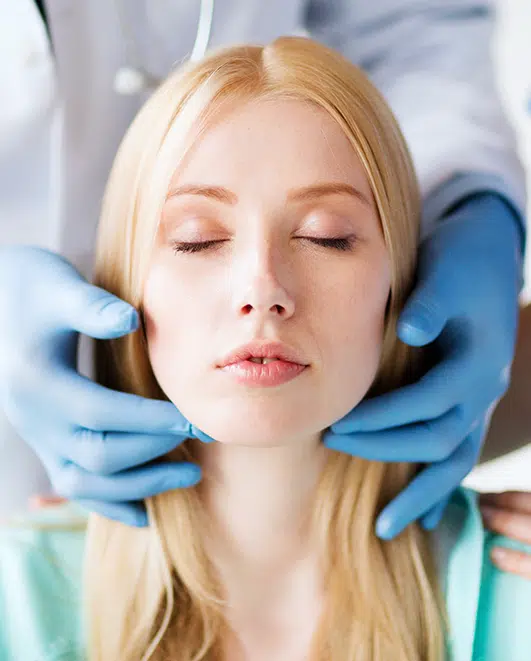
You can undergo rhinoplasty at a hospital, a doctor’s office, or an outpatient clinic. It normally takes between one and two hours to complete. Surgeons can perform rhinoplasty in a variety of ways. In any case, the steps of the surgery generally involve the following:
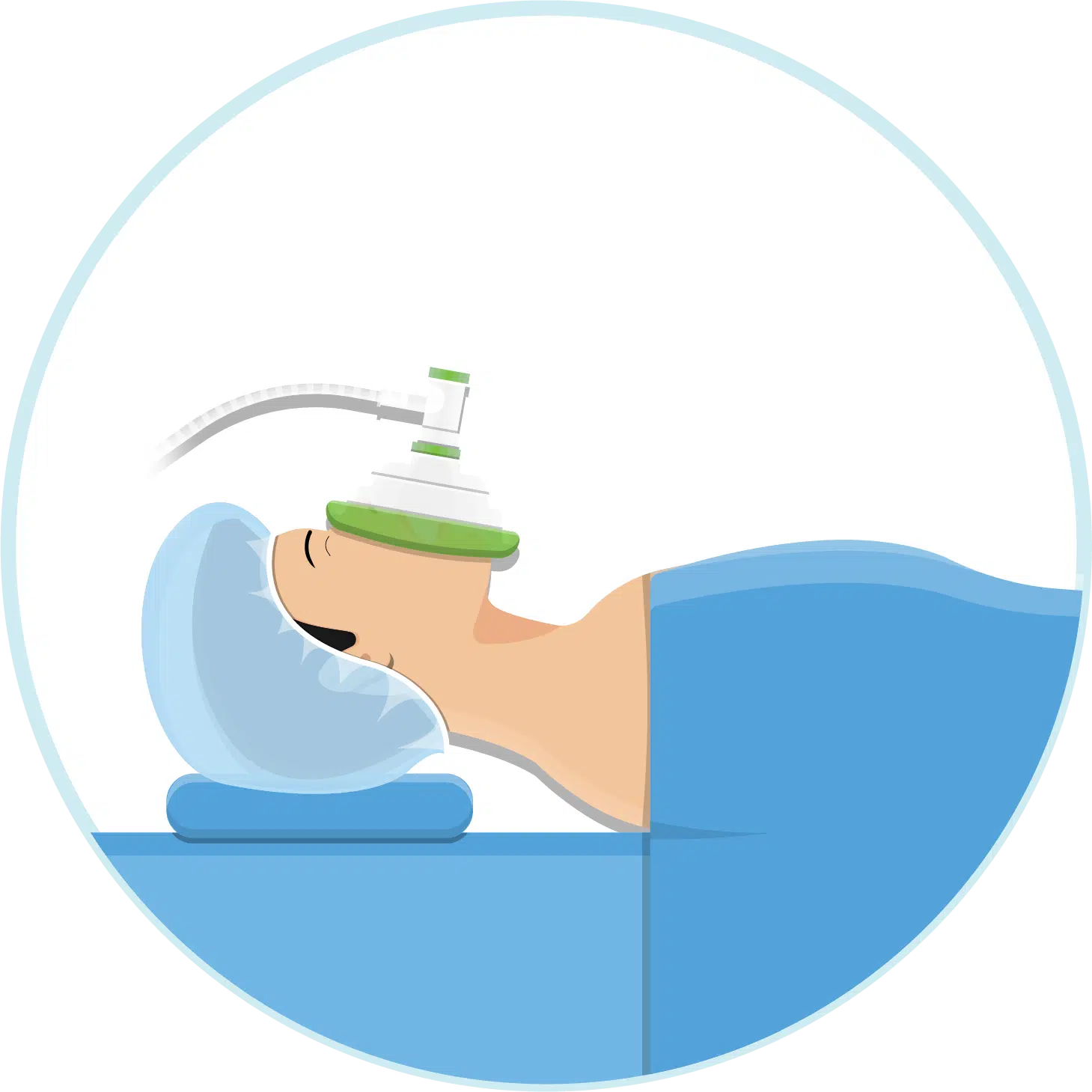
Your surgeon will provide you with general anesthesia to put you to sleep throughout the surgery.
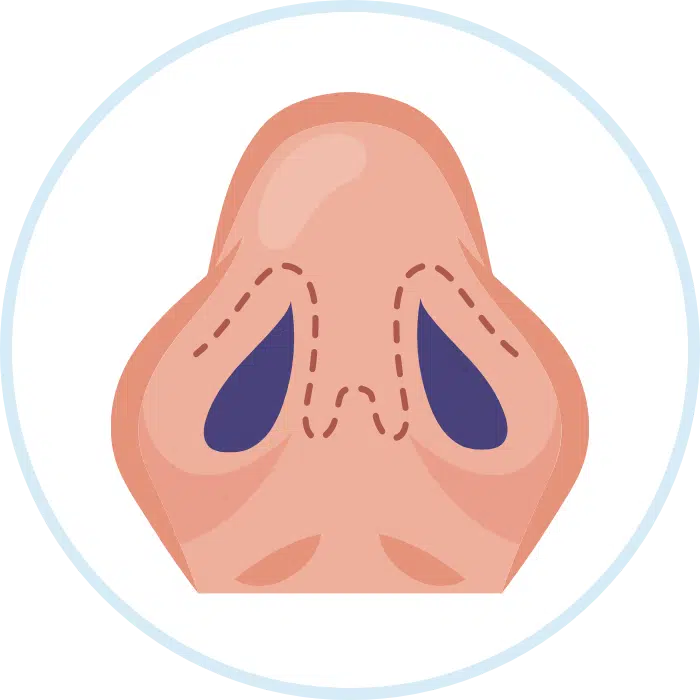
Then, your surgeon will make a tiny incision inside your nostrils or through the base of your nose.

The surgeon will remove some bone and cartilage to reshape your nose. If more cartilage is required, they can take cartilage from inside your nose, your ear, or other areas of your body.
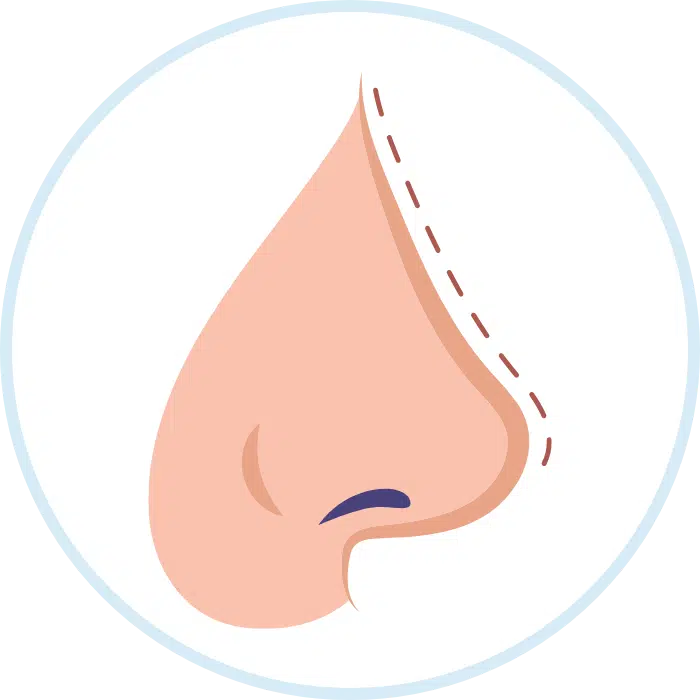
Finally, your surgeon closes the wound with stitches after covering the cartilage with skin and tissue. In addition, they will place a splint over your nose to keep it steady. You can remove the splint after a week.
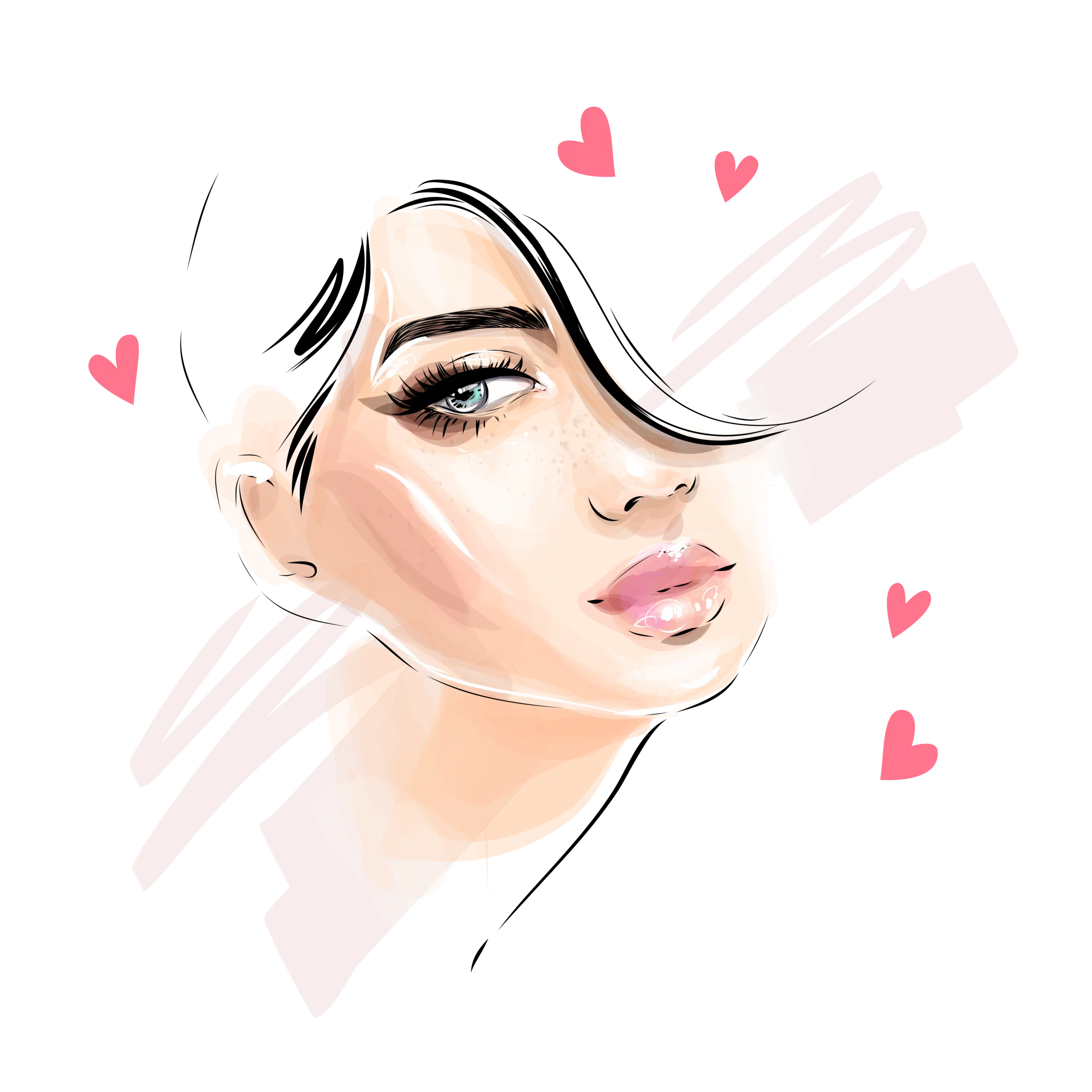
Any sort of surgery comes with its own set of risks and complications. Though uncommon, rhinoplasty poses some risks, including:
International Clinics helps international patients access affordable, high-quality medical and aesthetic procedures in Turkey.
Our team of consultants is here to answer your questions and provide guidance throughout your treatment journey.
Our partner hospitals and clinics have successfully performed thousands of procedures for patients from Europe, Asia, North America, and the Middle East.
Use the contact forms on our website to request a free consultation with our team. We’re ready to help you get the care you need.

The sense of smell is not affected at all by rhinoplasty. However, this is still one of the concerns that spook many people and prevent them from undergoing the surgery.
– Clinical examination to determine the shape and thickness of the nasal cartilages.
– Performing some laboratory tests, such as C-reactive protein (CRP).
– Blood clotting tests (D-dimer & INR) to avoid blood clots later.
– Examination of the nasal septum and breathing functions.
– Nose imaging and digital shape manipulation using special programs that can simulate the final shape.
The duration of rhinoplasty surgeries isn’t fixed and depends on the size of the nose and the techniques to be applied. For instance, surgeons may need about 2.5-3 hours when an open technique is applied, while they take about 3-3.5 hours if the closed technique is used
The recovery period after rhinoplasty takes between one week and ten days. The recovery period varies from one case to another.
Nose surgery is generally safe, and the patient can go home a few hours after the surgery. Often no complications occur during or after the surgery, except in a few cases.
Other options you might enjoy: Facelift
Additional recommendations you might appreciate: Liposuction
Intranasal tampons are rarely used nowadays in rhinoplasty due to difficulties removing tampons. Silicon tampons are placed in the nose to prevent adhesion formation by acting as a barrier between the inner and outer walls of the nose
Females can have the surgery after 17 years old, while males can have it after 18 years old. However, if there is a health issue that causes difficulty in breathing through the nose, surgery can be performed at a younger age
During Rhinoplasty surgery, additional surgeries can be performed to alleviate other negative health issues, such as septal deviation, concha bullosa, and sinus congestion, endoscopic sinus surgery (ESS), chin filler, chin enhancement surgery, and eyelid aesthetic surgery (blepharoplasty)
Turkey is among the top 5 countries in the world for cosmetic and aesthetic procedures, offering a wide range of surgical and non-surgical treatments for those who seek a better-defined nose
Turkey is better than Iran for a nose job and other nose cosmetic procedures. There is a myriad of reviews and opinions that point in this direction
Rhinoplasty recovery isn’t painful, but you may feel mild pain and some swelling in the first couple of days following the procedure
The cost of the procedure will depend on its complexity and extent. In Turkey, the average cost of rhinoplasty surgery is around 3500 US dollars, which translates into around 67000 Turkish Lira
